Design and Simulation of A Novel Piezoelectric AlN-Si Cantilever Gyroscope
Abstract
:1. Introduction
2. Working Principles
2.1. Working Principles of Drive Mode
2.2. Working Principles of Sense Mode
3. Design of AlN-Si Composite Cantilever Gyroscope
4. Conclusions
Acknowledgments
Author Contributions
Conflicts of Interest
References
- Sara, S.; Naser, E. Activity recognition using fusion of low-cost sensors on a smartphone for mobile navigation application. Micromachines 2015, 6, 1100–1134. [Google Scholar] [CrossRef]
- Gabriele, V. MEMS Aluminum Nitride Technology for Inertial Sensors. Doctoral Thesis, University of California, Berkeley, CA, USA, 2011. [Google Scholar]
- Fabian, T.G.; Gabriele, V.; Igor, I.I. Novel thin-film piezoelectric aluminum nitride rate gyroscope. In Proceedings of the 2012 IEEE International Ultrasonics Symposium, Dresden, Germany, 7–10 October 2012; pp. 1067–1070. [Google Scholar]
- Fabian, G.; Kirti, M.; Kansho, Y. Experimentally validated aluminum nitride based pressure, temperature and 3-axis acceleration sensors integrated on a single chip. In Proceedings of the 2014 IEEE 27th International Conference on Micro Electro Mechanical Systems, San Francisco, CA, USA, 26–30 January 2014; pp. 729–732. [Google Scholar]
- Roozbeh, T.; Mojtaba, H.S.; Farrokh, A. High-frequency AlN-on-silicon resonant square gyroscopes. J. Microelectromech. Syst. 2013, 22, 1007–1009. [Google Scholar]
- Mojtaba, H.S.; Arashk, N.S.; Roozbeh, T. A dynamically mode-matched piezoelectrically transduced high-frequency flexural disk gyroscope. In Proceedings of the 2015 28th IEEE International Conference on Micro Electro Mechanical Systems (MEMS), Estoril, Portugal, 18–22 January 2015; pp. 789–792. [Google Scholar]
- Mojtaba, H.S.; Arashk, N.S.; Farrokh, A. Eigenmode operation as a quadrature error cancellation technique for piezoelectric resonant gyroscopes. In Proceedings of the 2017 IEEE 30th International Conference on Micro Electro Mechanical Systems (MEMS), Las Vegas, NV, USA, 22–26 January 2017; pp. 1107–1110. [Google Scholar]
- Hernando, J.; Sanchez-Rojas, J.L.; Gonzalez-Castilla, S. Simulation and laser vibrometry characterization of piezoelectric AIN thin films. J. Appl. Phys. 2008, 104, 053502-1–053502-9. [Google Scholar] [CrossRef] [Green Version]
- Martin, F.; Muralt, P.; Dubois, M.A. Thickness dependence of the properties of highly c-axis textured AlN thin films. J. Vac. Sci. Technol. A Vac. Surf. Films 2004, 22, 361–365. [Google Scholar] [CrossRef]
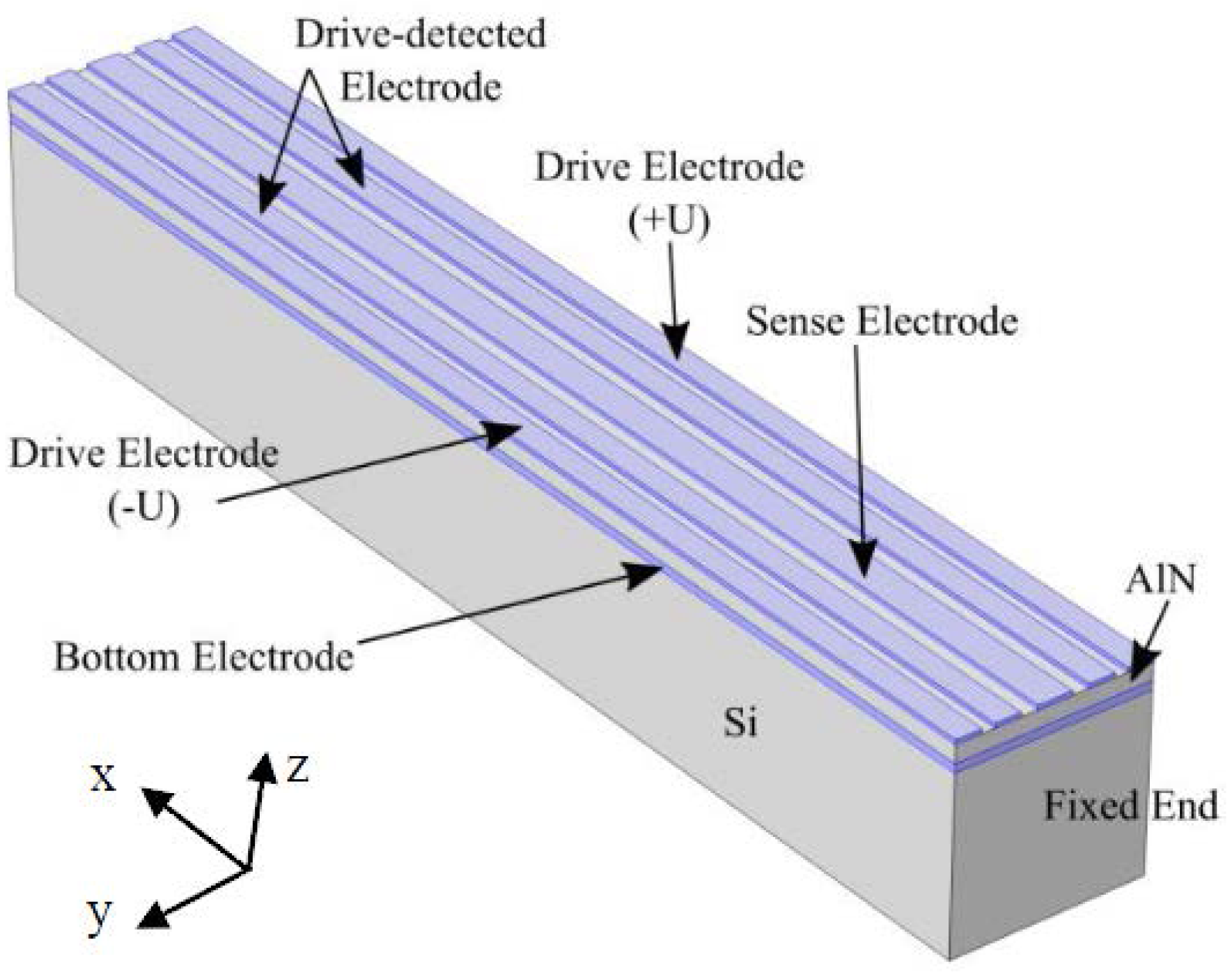
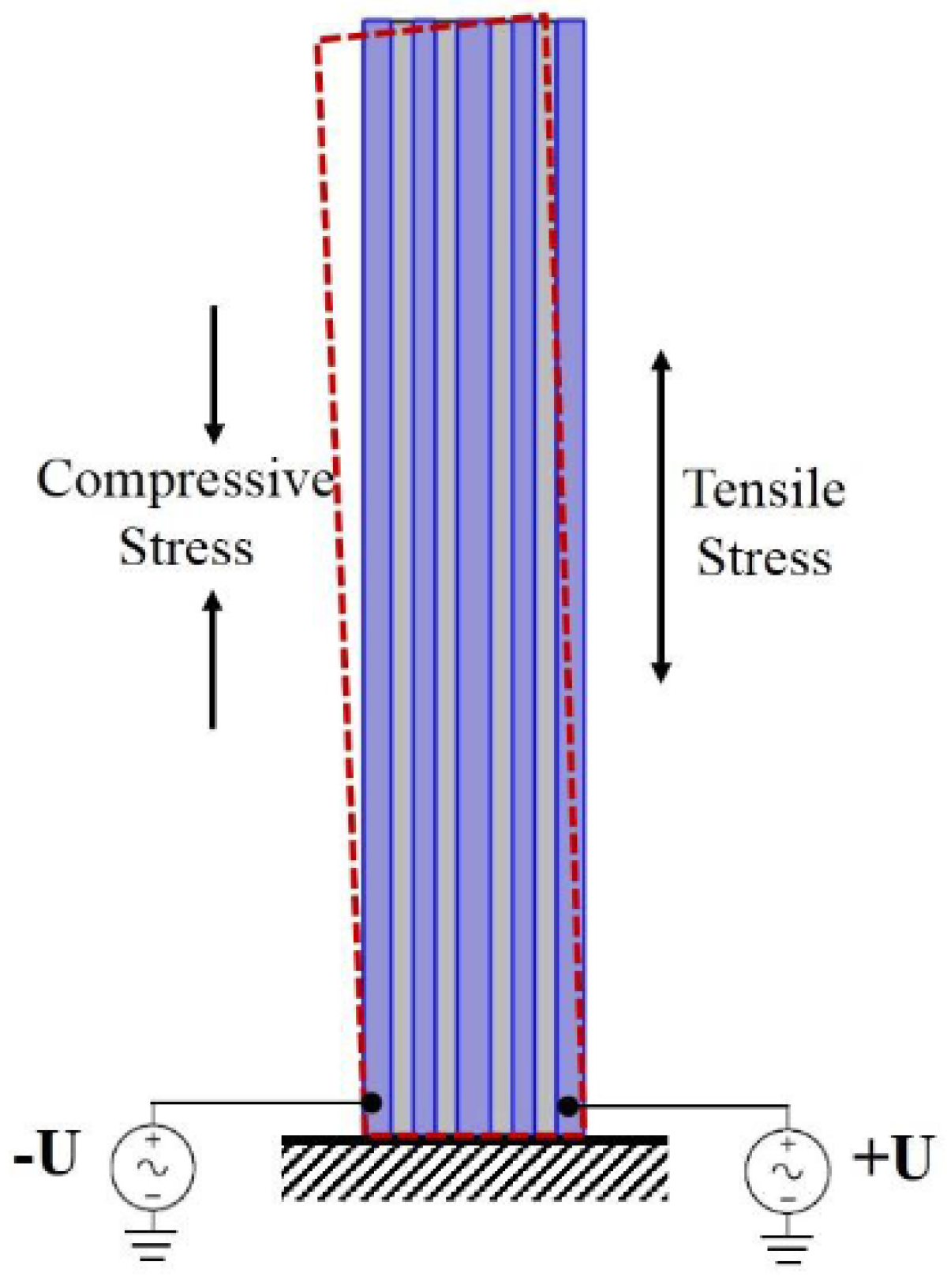
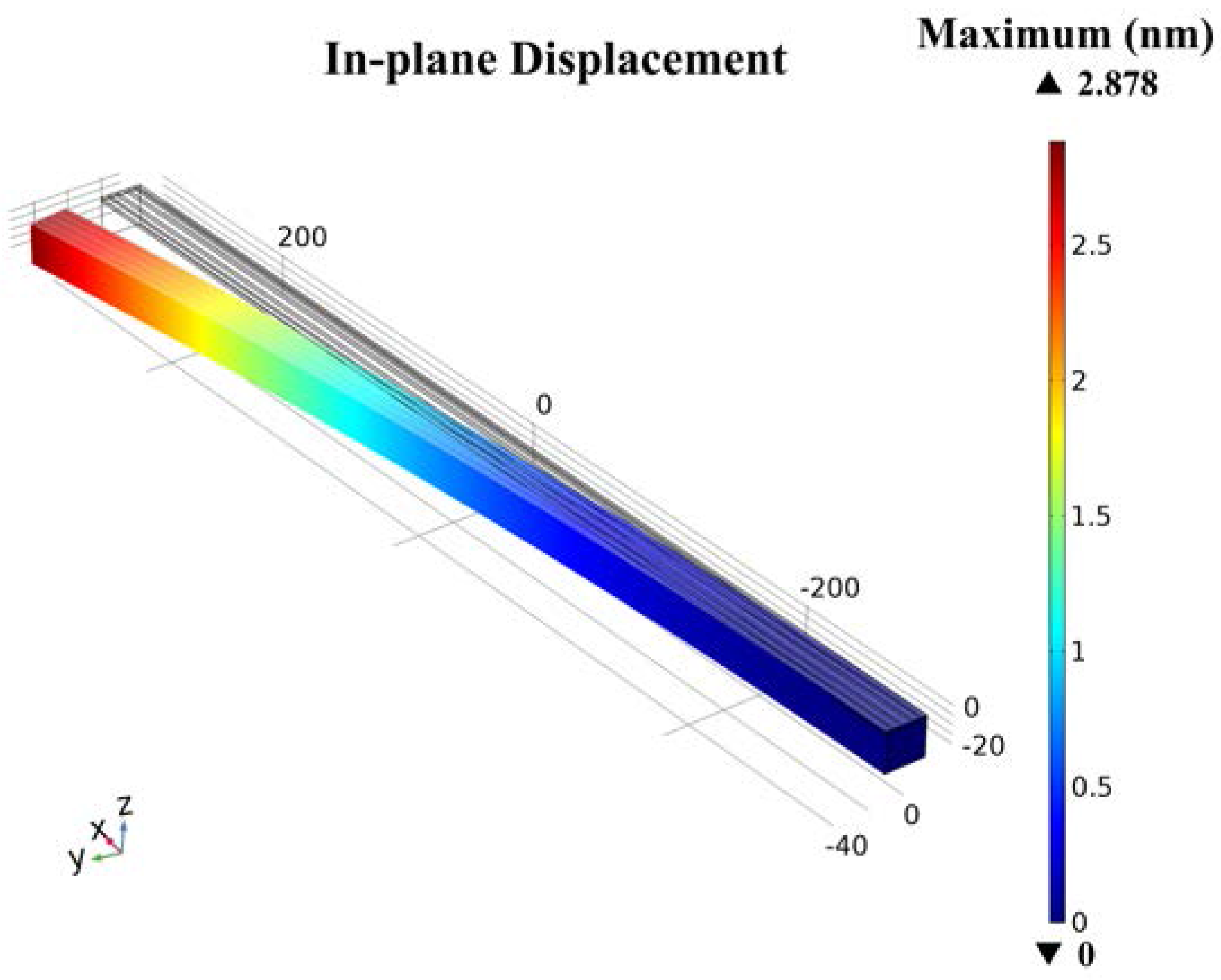
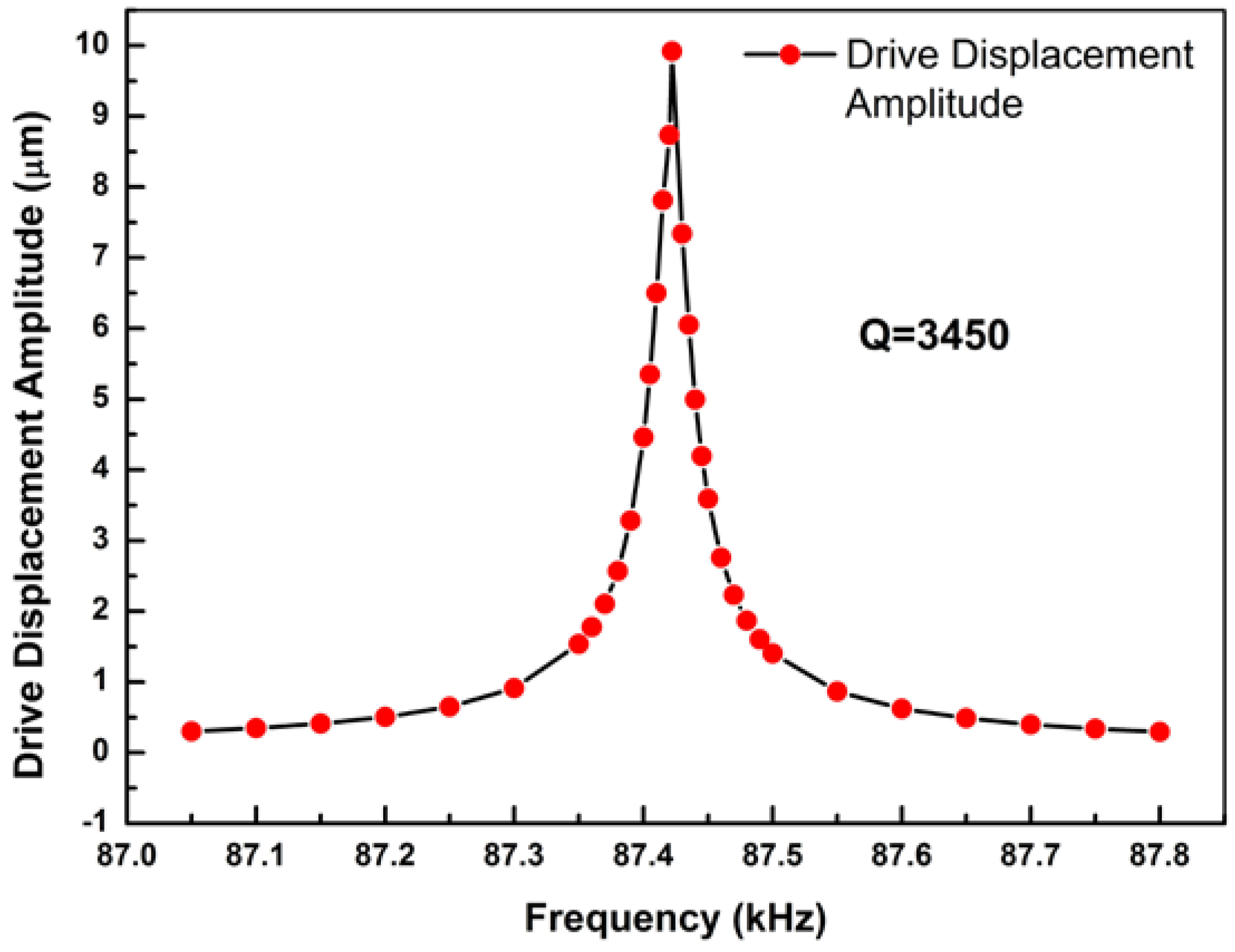
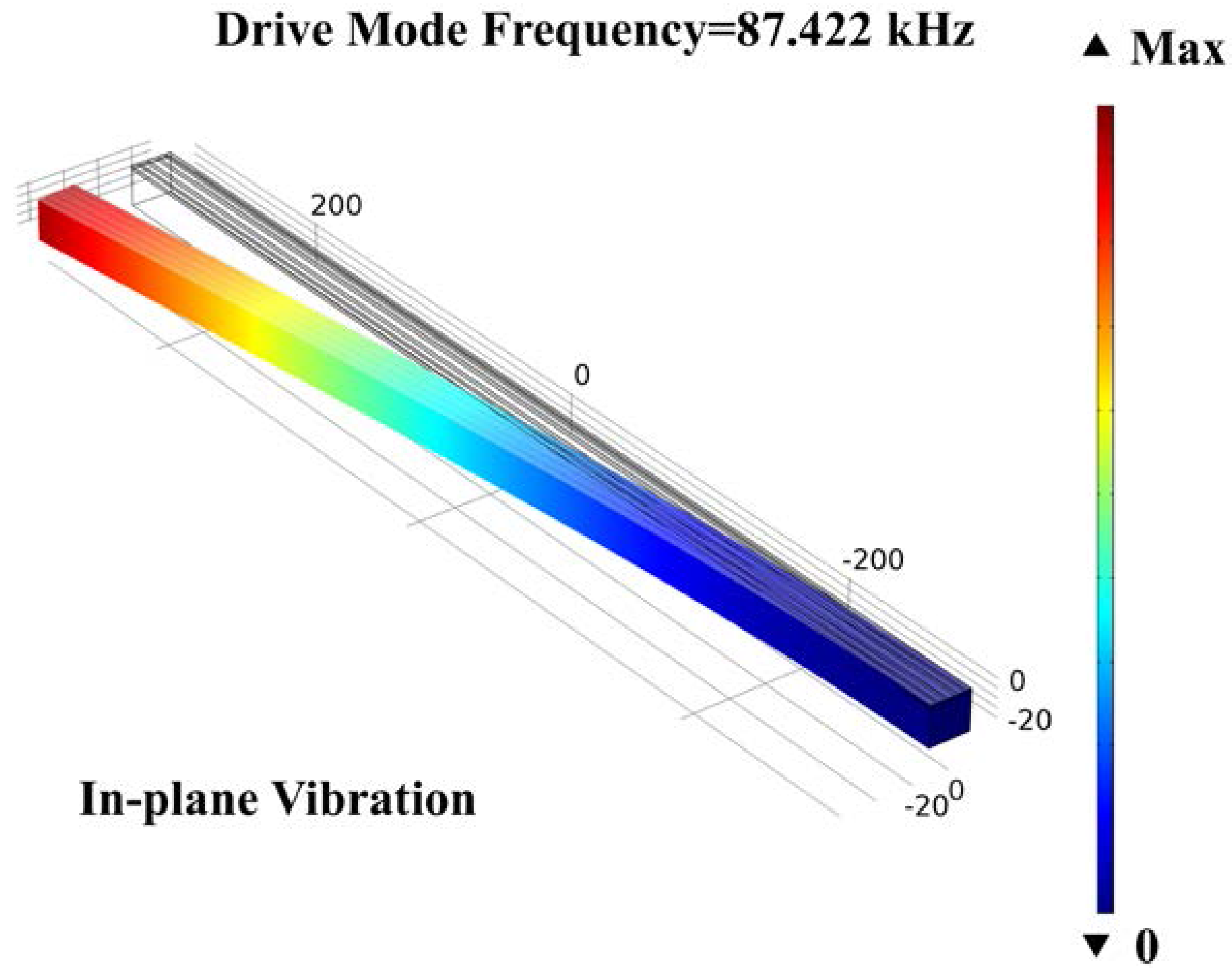

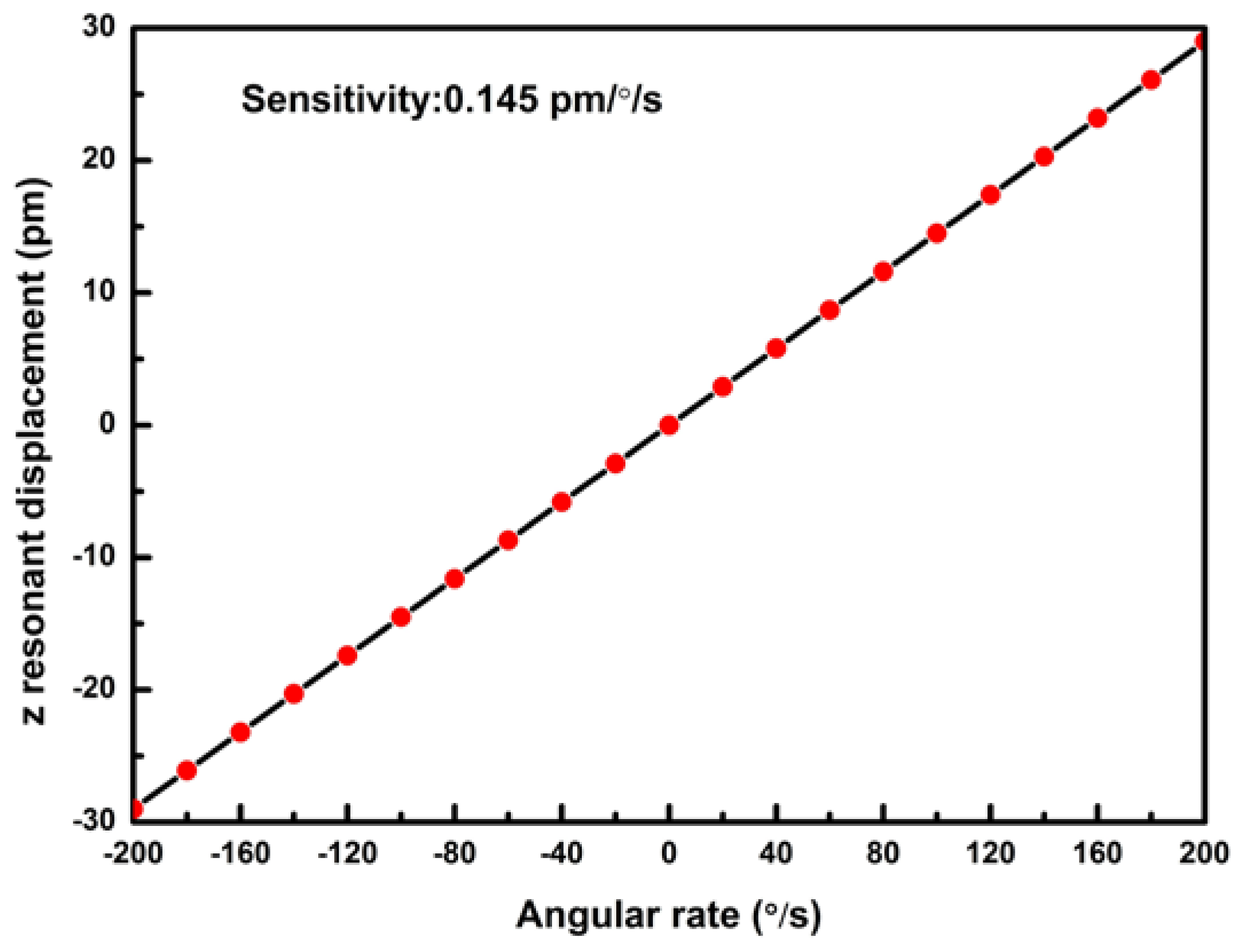
| Names | Parameters | Values | Units |
|---|---|---|---|
| EAlN | Young’s modulus | 410 | GPa |
| ESi | Young’s modulus | 160 | GPa |
| EMo | Young’s modulus | 312 | GPa |
| EAl | Young’s modulus | 70 | GPa |
| dAlN | Thickness | 1.5 | μm |
| dSi | Thickness | 20 | μm |
| dMo | Thickness | 0.3 | μm |
| dAl | Thickness | 0.3 | μm |
| d31 | Piezoelectric coefficient | −2.6 | pm/V |
| L | Length of cantilever | 600 | μm |
| W | Width of cantilever | 22.87 | μm |
| Wdri | Width of drive electrode | 3 | μm |
| U0 | Amplitude | 1 | V |
| Names | Parameters | Values | Units |
|---|---|---|---|
| L | Length of cantilever | 600 | μm |
| W | Width of cantilever | 22.87 | μm |
| Wdri | Width of drive electrode | 3 | μm |
| Wdri_det | Width of drive-detected electrode | 3 | μm |
| Wsen | Width of sense electrode | 4 | μm |
| dAlN | Thickness | 1.5 | μm |
| dSi | Thickness | 20 | μm |
| dMo | Thickness | 0.3 | μm |
| dAl | Thickness | 0.3 | μm |
© 2018 by the authors. Licensee MDPI, Basel, Switzerland. This article is an open access article distributed under the terms and conditions of the Creative Commons Attribution (CC BY) license (http://creativecommons.org/licenses/by/4.0/).
Share and Cite
Yang, J.; Si, C.; Yang, F.; Han, G.; Ning, J.; Yang, F.; Wang, X. Design and Simulation of A Novel Piezoelectric AlN-Si Cantilever Gyroscope. Micromachines 2018, 9, 81. https://doi.org/10.3390/mi9020081
Yang J, Si C, Yang F, Han G, Ning J, Yang F, Wang X. Design and Simulation of A Novel Piezoelectric AlN-Si Cantilever Gyroscope. Micromachines. 2018; 9(2):81. https://doi.org/10.3390/mi9020081
Chicago/Turabian StyleYang, Jian, Chaowei Si, Fan Yang, Guowei Han, Jin Ning, Fuhua Yang, and Xiaodong Wang. 2018. "Design and Simulation of A Novel Piezoelectric AlN-Si Cantilever Gyroscope" Micromachines 9, no. 2: 81. https://doi.org/10.3390/mi9020081





